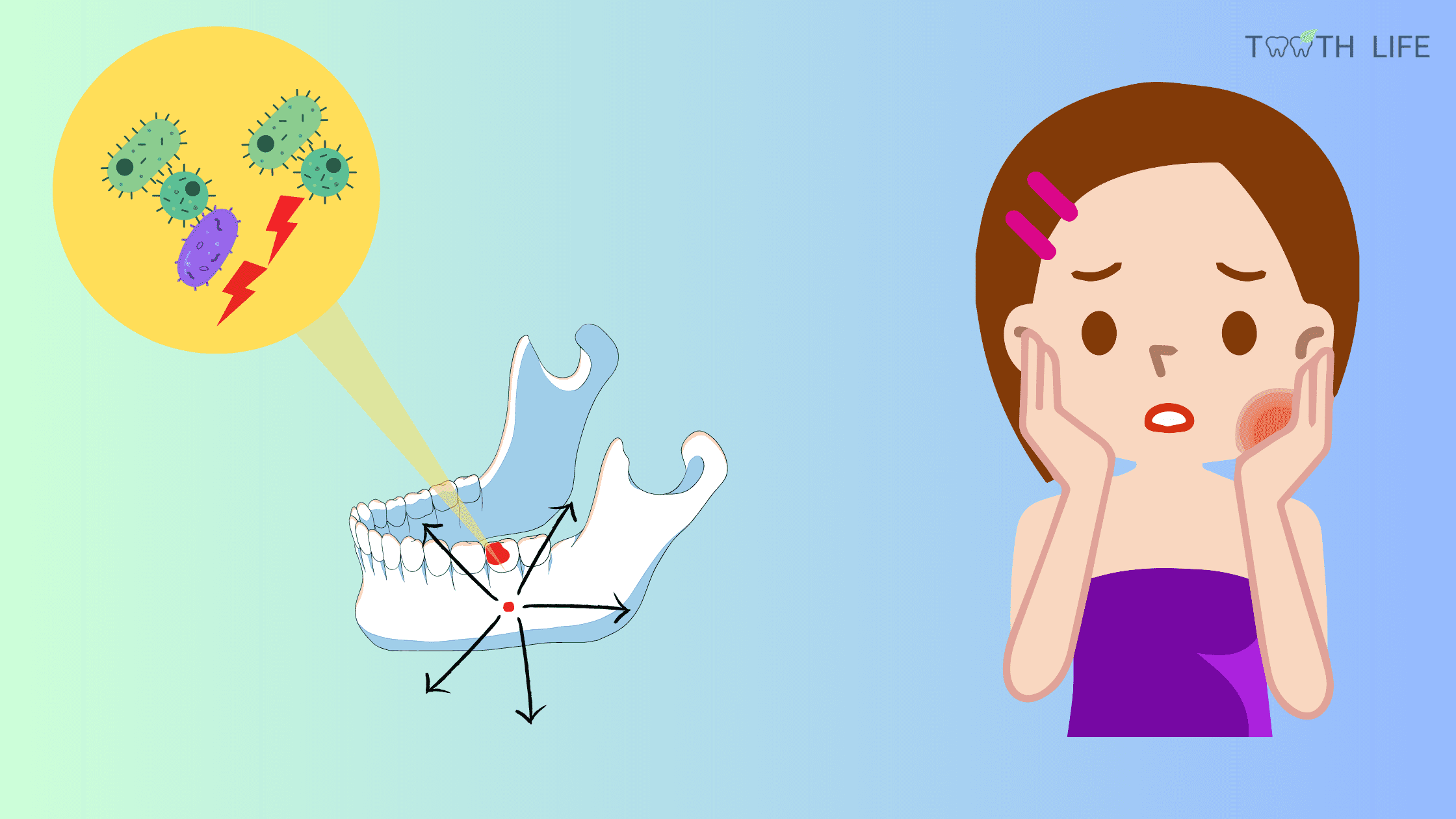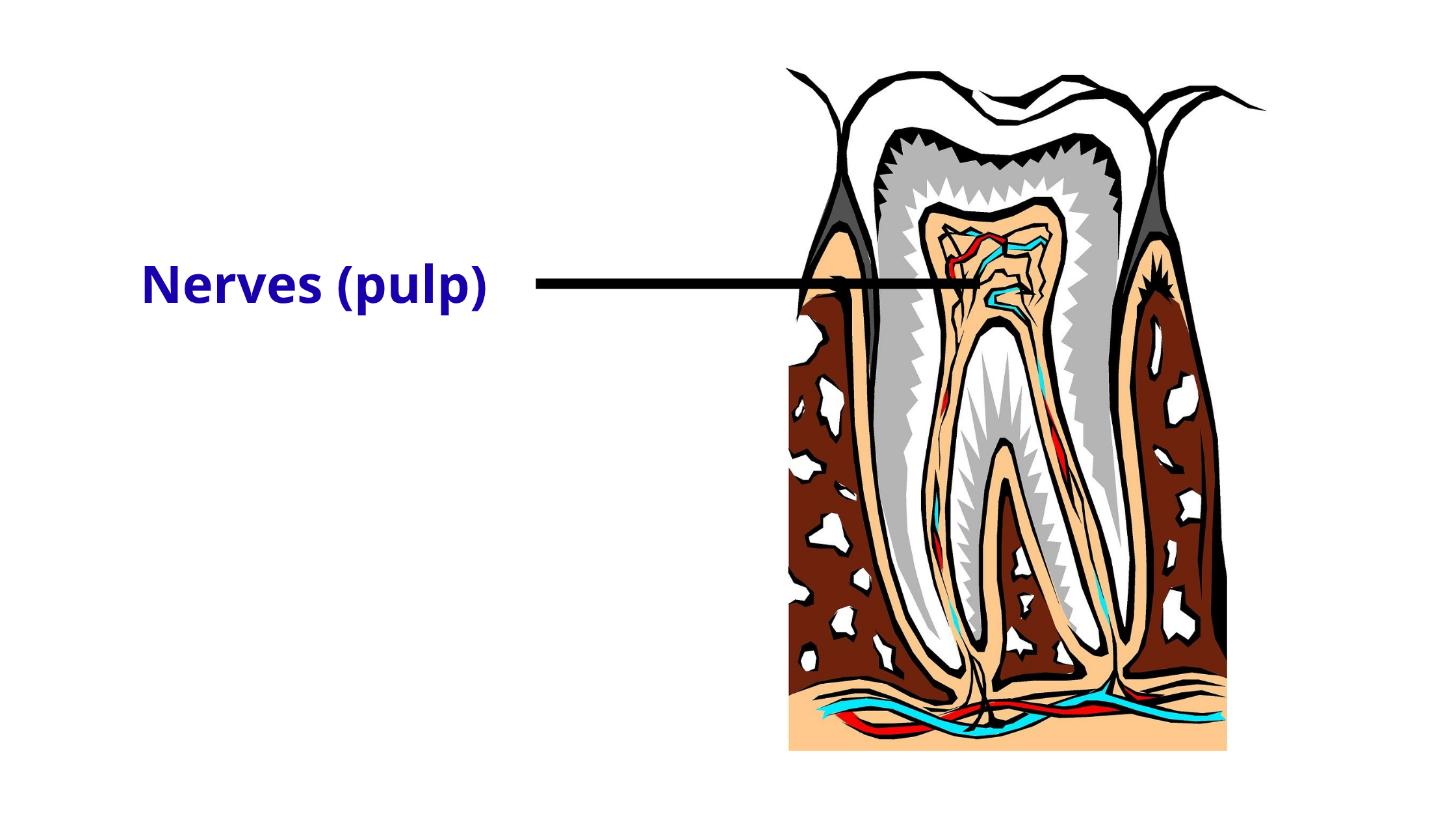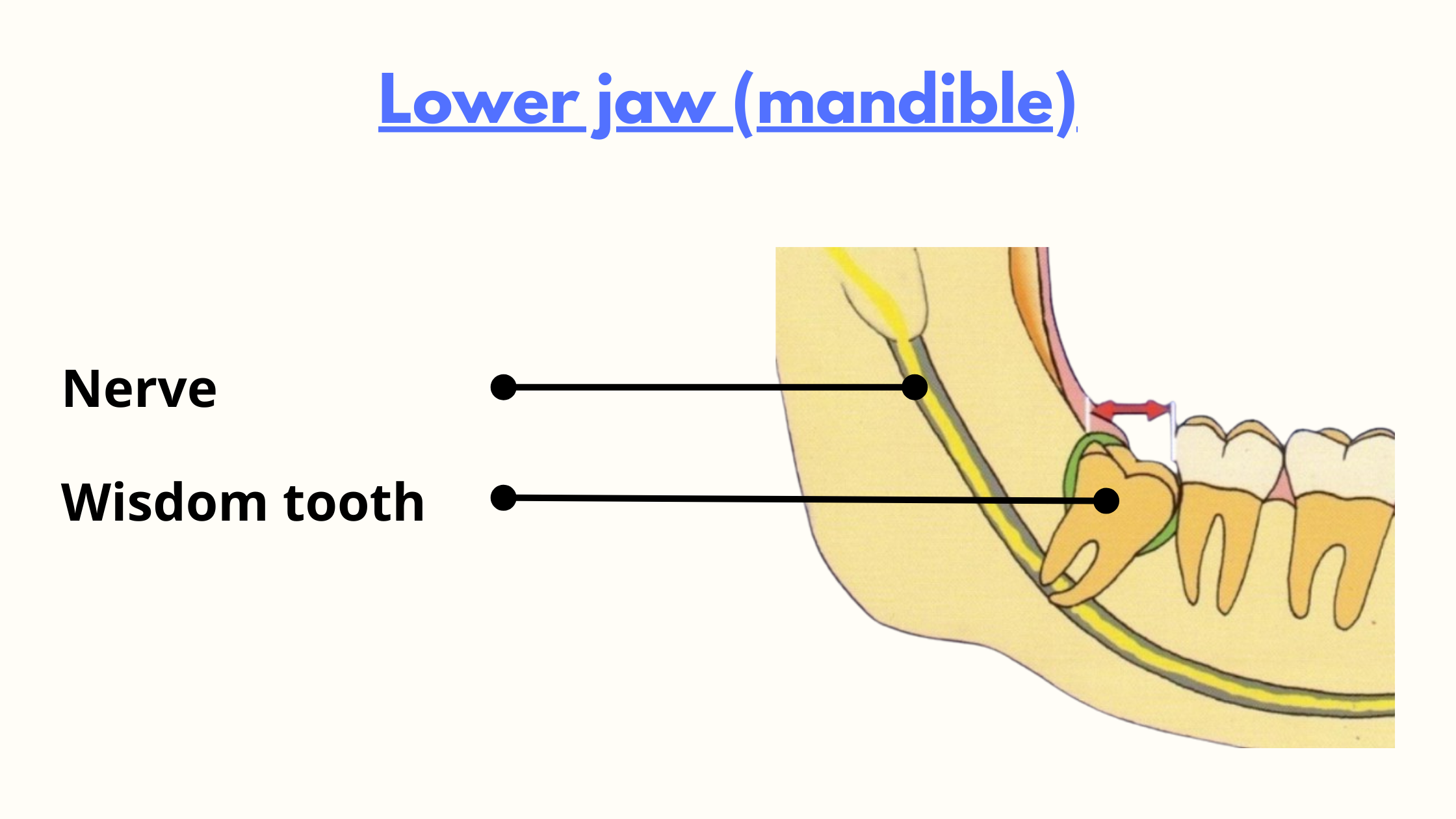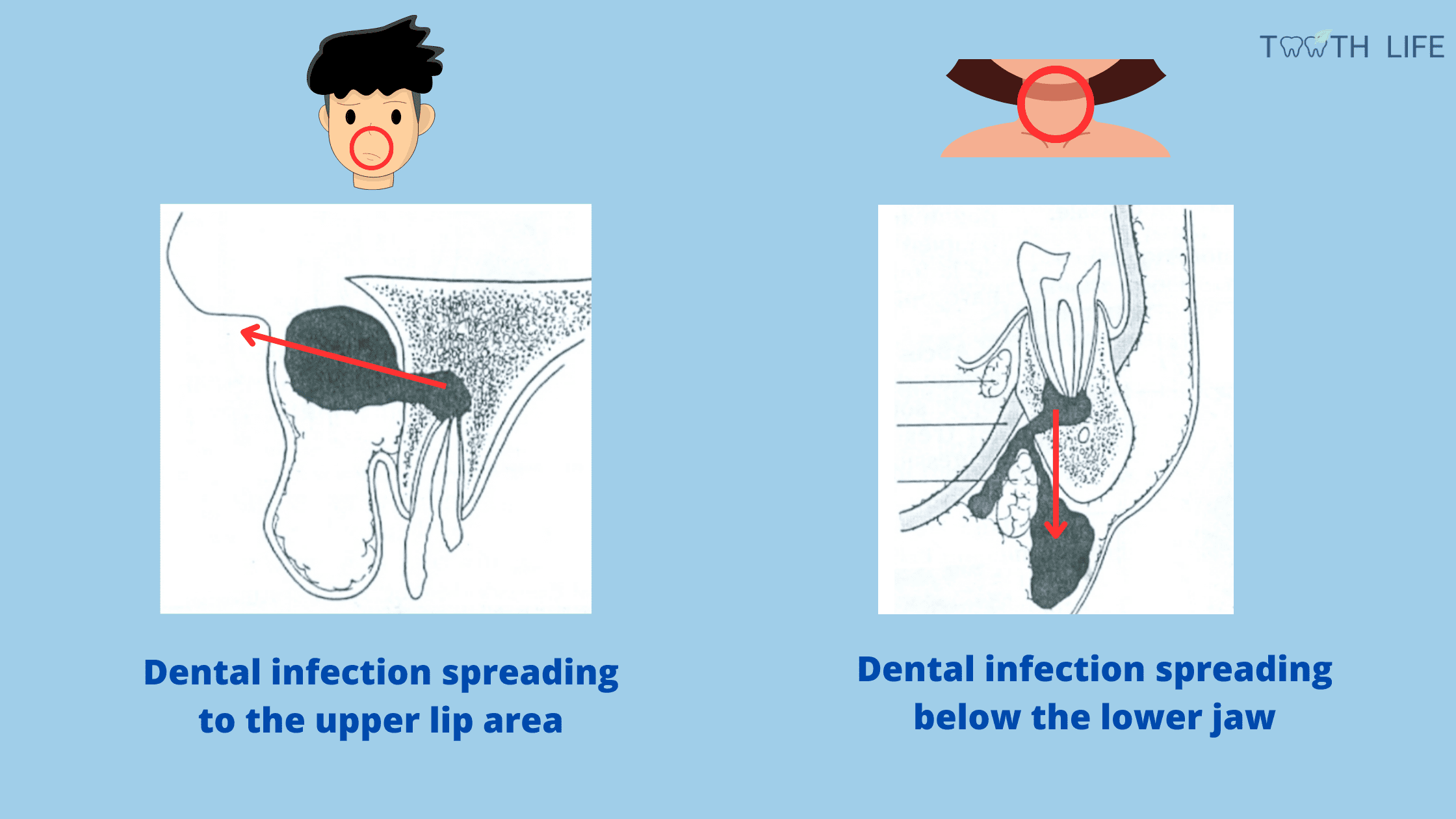How Tooth Infections Can Spread to Your Jaw and Face
 Although dental infections are usually localized and affect just one tooth, they don’t always stay that way.
Although dental infections are usually localized and affect just one tooth, they don’t always stay that way.
A tooth infection can spread beyond the tooth and affect nearby structures, including the jawbone and the surrounding facial tissues.
Once this happens, nothing can stop the infection from spreading further and causing more damage. In some cases, it can even become life-threatening—especially if it enters the upper airways or reaches the bloodstream.
Don’t let a tooth infection turn into a serious health risk. Learn how it can spread to your face and jawbone, and act early before it’s too late.
In this article:
1. What is a tooth infection?
2. How can a tooth infection spread to surrounding tissues?
3. Tooth infection spreading to the jawbone:
4. Tooth infection spreading to the face:
5. Takeaway
What is a tooth infection?
A tooth infection—also known as an abscessed tooth—is a bacterial infection that starts inside the tooth and spreads to the underlying bone and gum tissue. The most common cause is tooth decay or untreated cavities.However, anything that breaches the tooth’s hard outer layers can create an entry point for bacteria to reach the nerves (pulp). This means trauma, cracks, or fractures can also be culprits.

A swelling of the gums or "gum boil" is the most common result, as it’s the closest area to the tooth.
But, from there, the infection can travel into deeper tissues, including the face, jawbone, and even the throat.
How can a tooth infection spread to surrounding tissues?
The tooth is not an isolated organ—it’s connected to the jawbone and surrounded by the gums and facial tissues.When bacteria enter the nerves inside the tooth, the body tries to contain and fight them off. However, over time, the tooth can become overwhelmed and eventually die.
Once the tooth is no longer alive, bacteria can easily spread to nearby structures. The closest and most common targets are the underlying bone and gums, leading to what’s known as a gum abscess.
However, some anatomical variations and the tooth’s position can make it easier for bacteria to spread into other deeper areas.
For example, lower wisdom teeth are close to the nerve responsible for sensations in the mouth and lower face. Infection of the lower wisdom teeth can affect this nerve, causing tingling, numbness, or weird sensations in the chin, lips, and tongue.

If the infected tooth is an upper molar, the infection can spread to the overlying sinuses, which are located very close to the root tips. This can result in sinusitis.
So, while a gum abscess is the most common outcome, tooth infections don’t always follow the same path. For some people, the infection is likely to stay local, but for others, it can spread deeper and become more serious.
People with weakened immune systems—such as those with diabetes or blood disorders—are at an even higher risk of severe and widespread infections compared to healthy individuals with strong immune defenses.
Tooth infection spreading to the jawbone:
When a tooth infection spreads to the underlying jawbone, it’s called osteitis. This is rare, but it’s a serious complication that can damage the jaw and lead to facial and aesthetic problems.Why is it uncommon for bacteria to invade the jawbone? Simply because they usually follow the path of least resistance. Softer facial tissues are easier to penetrate than hard bone.
When bacteria do reach the jawbone, they trigger strong inflammation that raises the pressure inside the bone.
The problem is that bone is rigid—it can’t expand or swell—so it can’t relieve this pressure. As the inflammation builds, it can compress and restrict the blood supply to the jaw. Without enough oxygen and nutrients, parts of the bone may die, which can cause fragments to break off.
Without treatment, this destructive process can continue, eventually leading to severe jawbone loss.
Symptoms of tooth infection spreading to jawbone:
- Pain in the affected tooth, jaw, or face
- Hard swelling in the jaw or face
- Fever and chills
- Difficulty opening the mouth or jaw stiffness
- A bad taste in the mouth or a foul odor
- Pus or drainage from the infected tooth or gums
- Visible redness and inflammation in the affected area
- A feeling of pressure or fullness in the jaw or face
- Teeth loosening
Tooth infection spreading to the face:
A tooth infection is more likely to spread to the facial tissues than to the jawbone. The areas that can be affected include the cheeks, lips, under the eyes, beneath the tongue, and below the lower jaw.
This condition is known as facial cellulitis, a serious complication of an untreated tooth infection.
Common signs of facial cellulitis include:
- Redness
- Swelling
- Pain
- Warmth in the area
- Pus leakage
- Fever, fatigue, and swollen lymph nodes
But the infection doesn’t always stop there. Once it reaches the facial tissues, it can spread deeper, depending on anatomical factors and the structures close to the affected area.
The spaces beneath the tongue and lower jaw connect with the upper airway. An infection in these areas can block the airway and become life-threatening.
If the infection spreads to the sinuses or the area under the eyes, it can reach veins that lead directly to the skull. This can result in a brain abscess—a dangerous and potentially fatal complication.
Takeaway
A tooth infection should never be allowed to spread and reach advanced stages.It might seem trivial— after all, it’s just a tooth. It can’t cause that much harm, right?
The only time this is true is when it’s treated early enough. Early treatment is simpler, more effective, and much less expensive.
The longer a tooth infection spreads and worsens, the more complicated the treatment becomes—and the bigger the risk to your overall health.
As we’ve seen, a tooth is an organ connected to your whole body. So what can truly stop bacteria from spreading further? Nothing.
Never ignore or delay treatment for a dental infection. Treat it as soon as possible, before it escalates into something far more serious.
- The prevalence of odontogenic maxillary osteitis at the Cocody University Hospital's Odontostomatological Consultation and Treatment Center (CCTOS), Abidjan (Ivory Coast): clinical and therapeutic aspects | Journal of Oral Medicine and Oral Surgery (jomos.org)
- Essentials of Oral Pathology Book by Swapan Kumar Purkait
- L'infection de la racine de votre dent n'est pas traitée (lecourrierdudentiste.com)
- Heart Valves and Infective Endocarditis https://www.heart.org/en/health-topics/heart-valve-problems-and-disease/heart-valve-problems-and-causes/heart-valves-and-infective-endocarditis
- What Is Sepsis? Symptoms and Treatment https://share.upmc.com/2017/09/what-is-sepsis/